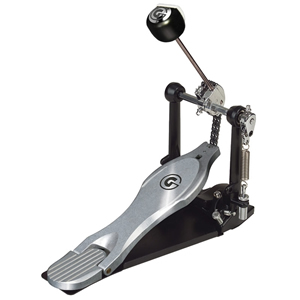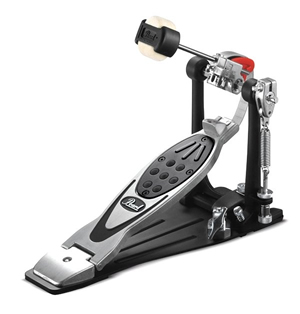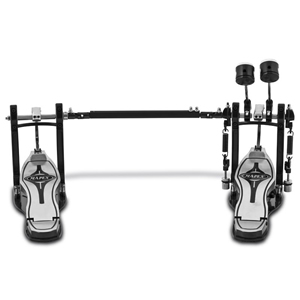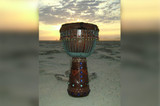Kick Up the Bass: Our Kick Pedal Obsession
Just ask any drummer about the most important sound from a drum set… and, you’ll get a different response each time. But, just because drummers cannot agree on what part of the drum set is the best, that doesn’t mean that drummers who prefer the bass drum are entirely wrong. If that is, of course, the answer, which we are assuming, solely so we can discuss our love for kick pedals.
Kick pedals became necessary additions to a drum set back in the early 1900s, when drummers realized that between the toms, snare, bass and cymbals, there were only so many hands that could be used at one time. Obviously, those feet that were still tapping away at the beat could be put to better use, and a wide range of devices were developed in order to facilitate the hands-free playing of the bass drum. Many believe the earliest rendition of the kick pedal was a mallet attached to a drummer’s foot, inciting a kicking motion in order to play the bass drum accordingly. It boggles the mind how many bass drums were harmed in that whole process, which is probably what led to the first editions of the kick pedals we know and love today.

Ludwig Drums, of course, was the first to patent a kick pedal with the same “mallet-with-a-pedal” design we see today, and the company has continued to be on the forefront of kick pedal design, enhancement and overall awesomeness of the kick pedal. Gibraltar, Meinl, PDP, Mapex and Pearl all have their own lines of kick pedals, as well, and over the last century, each of the aforementioned companies have continued to refine kick pedals to best serve the needs of the drummer. These refinements have included simple tweaks like kick pedals designed for either foot, double bass kick pedals and kick pedals constructed with different mechanical drives, different metals and kick plate size (yes, it matters!).

Far from the earliest kick pedals, modern drum pedals are exemplary examples of absolute technological and drummer ingenuity. Each improvement over the original kick pedals has increased the comfort of the drummer, the speed of the drumming and helped to enhance the tone of those important bass hits.
Kick pedals usually fall into three different types: chain drive, belt drive or direct drive. Belt drive pedals once used leather straps, but, the leather would often deteriorate so modern “belts” are made from synthetic materials. Chain drive pedals use bicycle chains, and can be a bit heavier to use, but are still great for all drummers. Direct drive pedals are the most solidly linked pedals, and are thought to be easiest to use but, the “solid” design also decreases their adjustability.
Some great kick pedals include:
The Gibraltar Tour Class Single Bass Drum Pedal: all about the easy action and hardcore bass hits.
The Pearl PowerShifter Eliminator Bass Drum Pedal: entirely customizable, yet, never loses a beat when it comes to power and tenability.
The Mapex P900DTW Raptor Direct Drive Pedal: smooth, stable and powerful, with single and double bass models.

Today, there are more kick pedals than you can shake a stick at, but, each serves a very important purpose no matter the type of drums you play (there are even kickpedals for cajon drums!) or your flavor of music. Kick pedals keep the thump of the bass alive, allowing a drummer to keep using his or her hands in wondrous ways on the rest of the drum set, cajon drum or any other instruments that are being played with the hands.
Recent Posts
-
What is the Best Size Djembe for Beginners?
If you're new to the world of percussion and interested in learning the djembe, you're in for a t …16th Jul 2024 -
The Benefits of Becoming a Drumming Teacher: Transforming Passion into Profession
Why become a drumming teacher? Becoming a drumming teacher is an excellent way to share your pas …22nd May 2024 -
What Makes the Djembe Drum a Spiritual Instrument in African Music?
Origin and history of the Djembe drum The Djembe drum originates from West Africa and holds sign …16th May 2024



